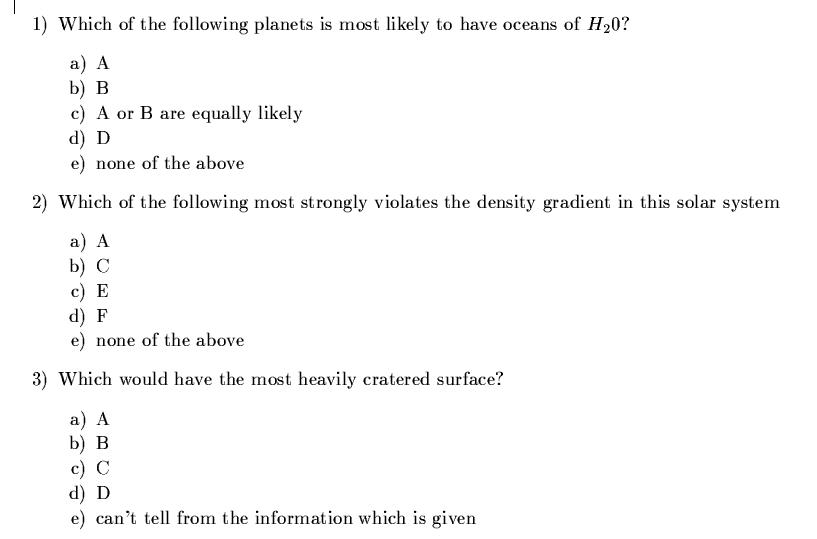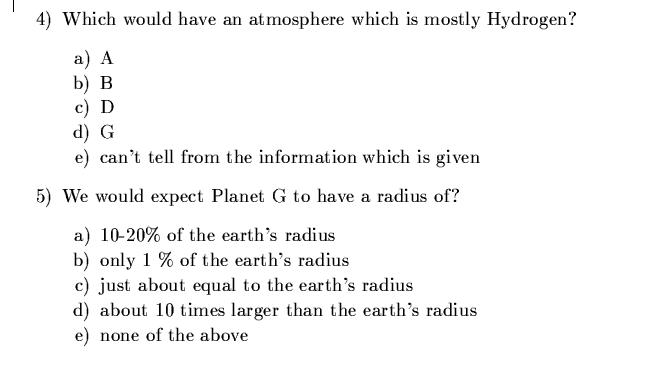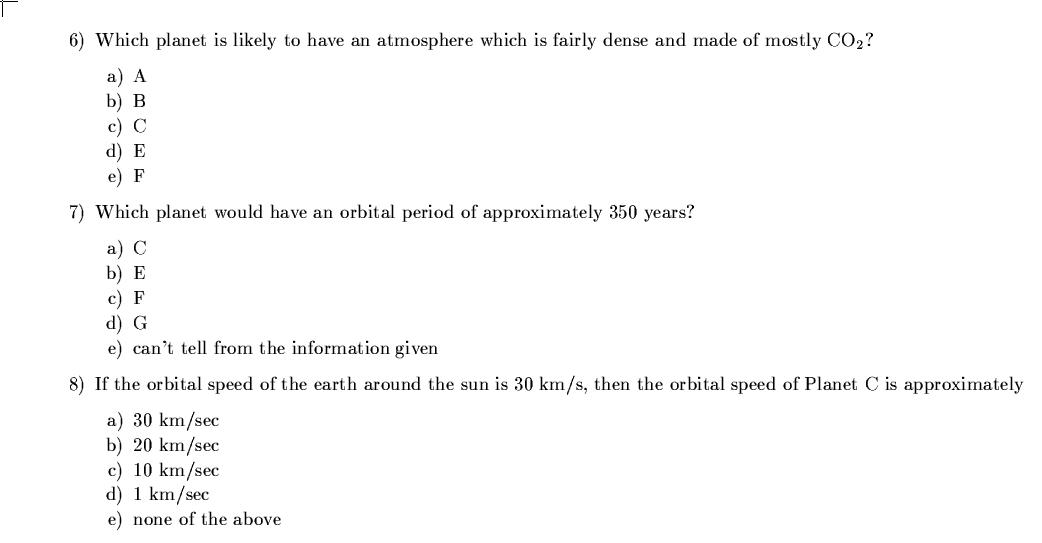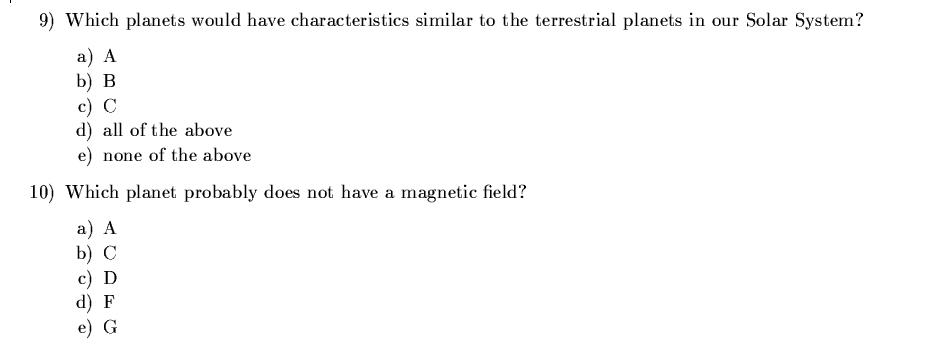To properly tackle the multipart questions below, the density of each planet
must be computed in terms of earth's density. Earth mass and Earth radii
are given for each of the hypothetical planets.
After this you use considerations of distance from the star and mass of
the planet, in anology with out Solar System, to critically think about
the options.
So we will do this explicitly in class on Thursday and this conceptual
framework will definitely be on the final exam.





The final exam will be cumulative but will mostly cover material since
the last midterm. The format of the final exam will be identical to the
midterm but will involve slightly more questions.
Don't forget about reviewing the geologically history of the moon as
that question was done badly on the midterm. You should also review
the material dealing with the overall properites of the solar system
and its likely formation history.
Material since the midterm includes:
- the properties of Mars
- The issue of water on Mars
- The possibility of primitive life on Mars.
- The properties of the asteroid belt and what they tell us about
the formation of the solar system
- The role of Jupiter in the context of the formation of the Solar
System
- The different formation scenarios for Jupiter like planets.
- The interior properties of Jupiter - for instance how do we know it
has a rocky core?
- The variation in surface properties among the Galilean satellites
- The primary differences between the satellite system of Saturn and
the satellite system of Jupiter
- The mechanism for helium rain on Saturn and the new data that suggests
its not really as operative as we once thought.
- The properties of Uranus and Neptune - how they differ from Jupiter and
Saturn
- The nature of the respective satellite systems of Uranus and Neptune - what
is special about Miranda for instance?
- The properties and composition of comets and their role in the overall
evolution of the solar system
- Our increasing understanding of the important role of impacts and mass
extinctions in determining the overall evolutionary rates on the Earth
- Early physical aspects of the evolution of planetary atmospheres on the
various planets in the solar system
- The chain of processes on the earth which eventually allowed for the formation
of aerobic photosynthesis and the release of Oxgyen
- The formation of the Ozone protective layer around the Earth.
- The Various Techniques used to detect extrasolar planetary systems.
- What the movie Koyanisqattsi was trying to tell us ...





